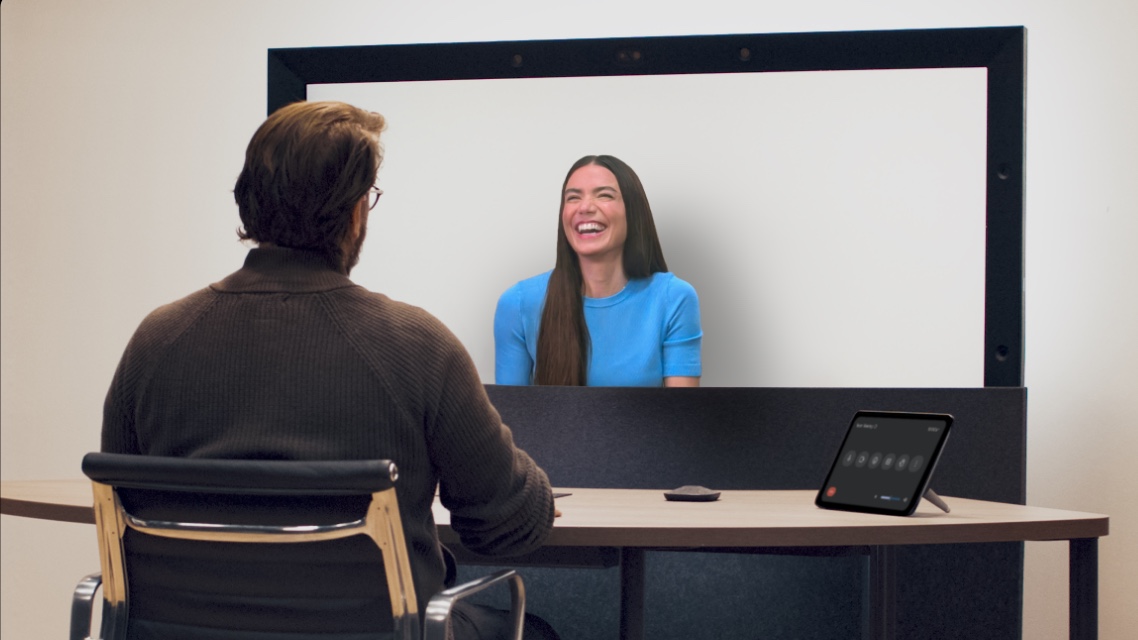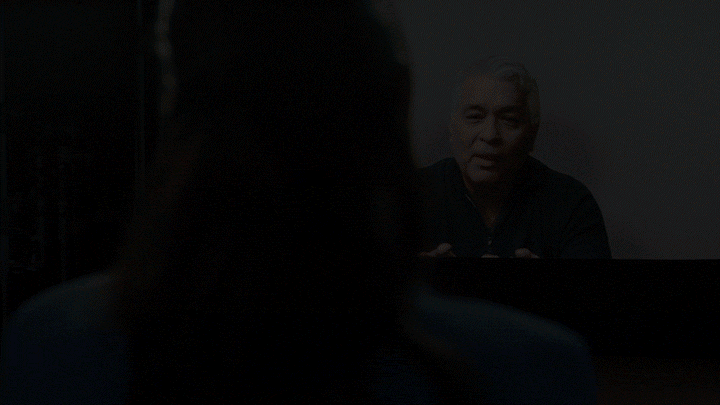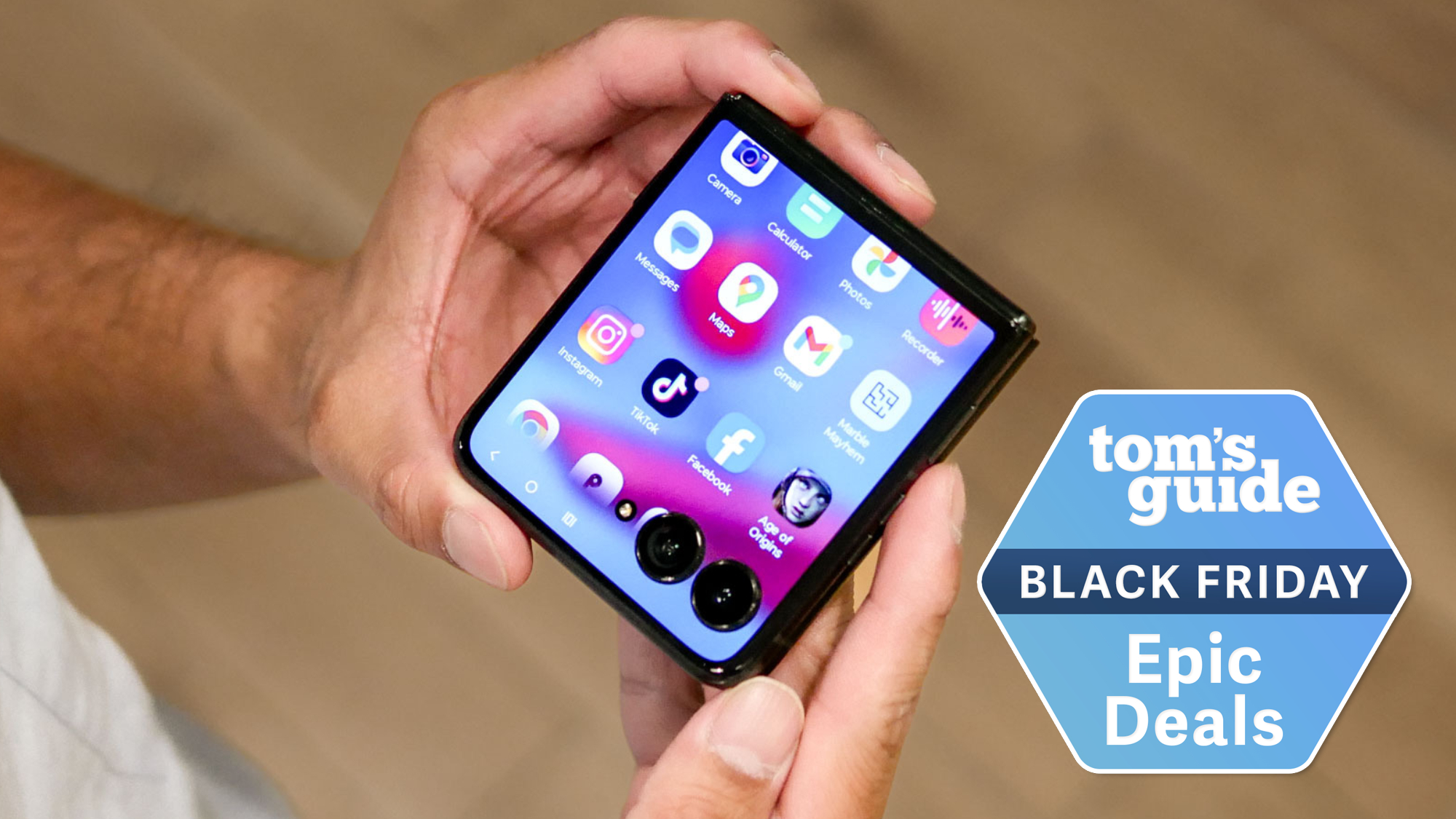Google Beam brings 3D to video chat — here's how it works
Project Starline has a new name — and a looming launch

Last year at Google I/O, I got the chance to try out Project Starline, a video conferencing tool that brings 3D depth to your video chat sessions. Using both AI, 3D imagining and other equipment, Google turns the person on the other end of the line into a 3D image with depth and presence — it's more like talking to a person on the other side of a window than in a flat panel from the other side of the world.
I found Project Starline to be pretty impressive during my brief demo a year ago, even if I thought there were a few things Google would need to iron out if it was to make its goal of having a commercial product ready by 2025.
Apparently, Google believes it's ironed those things out. At Google I/O 2025 today (May 20), the company announced that Project Starline is becoming a new product called Google Beam. And even more significantly, Google Beam-ready devices are on the way.
Google Beam: What you need to know

The name be changing but the idea behind Google Beam is not all that different from Project Starline. You sit in front of a device with a light field display equipped with cameras — back in my demo, it was three sets of dual cameras on the sides and top of the monitor — to capture your image. An AI volumetric video model developed by Google than turns your 2D image into a 3D one.
It's a pretty effective visual illusion, like a magic mirror come to life. The person on the other end of the call no longer looks flat, but rather like you could reach out and touch them. (I wouldn't advise it, though — it kind of ruins the illusion that you're just talking to a version on the other side of a window.)
There's more than just a visual parlor trick at play here. Google argues that talking to a 3D recreation of a person lends them a more realistic air. You're more likely to make eye contact and stay engaged than you would be with a flat image that's competing for attention with other open widows on your display. And with 3D, you're more likely to pick up on non-verbal cues like you would if you were talking to someone in the same room — or so Google argues at any rate.
My demo from a year ago didn't last long enough to see if my attention wandered over the course of a longer video chat session. But Google's on to something when it maintains that a 3D video call lends a sense of presence that's not there in the current iteration of chat options like Google Meet.
Get instant access to breaking news, the hottest reviews, great deals and helpful tips.
Google Beam has picked up one new trick since last year. The real-time translation features that Google is adding to Google Meet — another I/O 2025 announcement — will also be supported in Google Beam. That means when you have a conversation with another person, both participants can speak in their native language; the regular audio ducks down in favor of an AI-powered translator who converts what's being said on the fly.
Initially, the real-time translation feature in Google Meet — and presumably Google Beam — will work with English and Spanish, though Google says other languages are coming, too.
Google Beam: What's next
Google Beam may have its new name and Google's confidence that it's ready for prime time. But there are other pieces of the video conferencing puzzle that need to fall into place. Namely, we need hardware that supports the 3D technology Google is pushing.
And that's where HP comes in. The company emerged as a Project Starline partner last year, pledging to work with Google to develop products that would be ready in 2025. We're about to find out exactly what those products will be, as Google says HP will be showing off Google Beam-ready devices at the InfoComm 2025 Pro AV trade show next month in Florida.
Google says it's also working with Zoom and HP to bring Google Beam to enterprises. It's also bringing the technology to businesses and organizations through various channel partners.
Google Beam is one of the many announcements Google is making at its Google I/O 2025 keynote today, with much of the event's focus on the role AI is playing with the company's products and initiatives. Follow our Google I/O live blog for the latest from Google, including the possibility of another hands-on session with Google Beam if that opportunity presents itself.
Updated on May 23 to note Zoom's involvement with Google Beam.
More from Tom's Guide
Philip Michaels is a Managing Editor at Tom's Guide. He's been covering personal technology since 1999 and was in the building when Steve Jobs showed off the iPhone for the first time. He's been evaluating smartphones since that first iPhone debuted in 2007, and he's been following phone carriers and smartphone plans since 2015. He has strong opinions about Apple, the Oakland Athletics, old movies and proper butchery techniques. Follow him at @PhilipMichaels.
You must confirm your public display name before commenting
Please logout and then login again, you will then be prompted to enter your display name.

